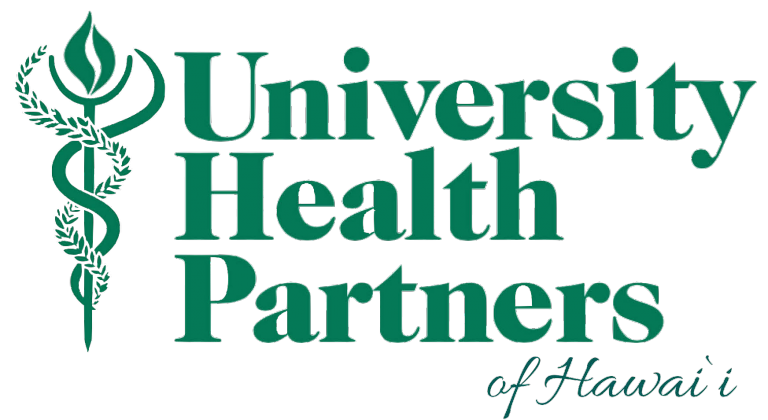Hyperbaric Treatment and
Wound Care Center
Hyperbaric oxygen therapy involves breathing pure oxygen in a pressurized room or tube. It’s a well-established treatment for decompression sickness (also known as the bends) which is a hazard of scuba diving, but there are many other conditions treated with the hyperbaric chamber including serious infections, bubbles of air in your blood vessels and wounds that won’t heal as a result of diabetes or radiation injury.
We are the faculty practice of the University of Hawaii, John A. Burns School of Medicine.
Hyperbaric Oxygen Therapy (HBOT) is a medical treatment that has been gaining significant attention due to its remarkable ability to enhance healing and circulation, thereby aiding patients in combating infections and promoting overall well-being.
While traditionally employed to treat decompression sickness (commonly known as the bends), HBOT’s application has expanded significantly. Today, it is utilized to address a diverse array of medical conditions, including wound care and radiation injuries, highlighting its versatility and effectiveness in modern healthcare practices.
We take pride in being a premier destination for Hyperbaric Treatment and Wound Care in the Pacific, distinguished as the sole “multi-place” facility in the state. Since 1983, our comprehensive facility has been at the forefront of delivering uninterrupted, state-of-the-art patient care and oxygen treatment.
At University Health Partners Hyperbaric Treatment Center, our dedication lies in maximizing the healing process for chronic wounds while providing unparalleled care. We employ state-of-the-art techniques and procedures to not only heal wounds but also prevent limb loss and optimize outcomes for our patients.
Our collaborative team comprises board-certified physicians, specially trained nurses, and wound care experts. Together, we deliver comprehensive care utilizing proven methods and advanced technologies to ensure the best possible outcomes for our patients.
Our Approach:
We work closely with different medical specialties like podiatry, infectious disease, orthopedics, and vascular surgery to ensure a comprehensive approach to wound care. By addressing underlying conditions and customizing treatments, we optimize healing for each patient.
We also prioritize patient education, teaching wound care techniques, proper nutrition, and exercise to promote overall health and healing for patients, families, and caregivers.
Our Services:
Patients at University Health Partners Hyperbaric Treatment Center receive comprehensive evaluations to identify underlying conditions contributing to non-healing wounds. We offer a wide range of treatments, including hyperbaric oxygen therapy, which involves breathing pure oxygen in a pressurized chamber.
Hyperbaric oxygen therapy can help with conditions like:
- Arterial ulcers
- Diabetic foot ulcers
- Neuropathic ulcers
- Non-healing wounds from diabetes, radiation, or surgery
- Osteoradionecrosis
- Serious infections
- Other chronic, non-healing wounds
If you’re struggling with chronic wounds, experience the difference at University Health Partners Hyperbaric Treatment Center. We are here to support you on your path to healing and a better quality of life.
Hyperbaric Oxygen Therapy FAQ
Hyperbaric Oxygen Therapy (HBOT) is a medical treatment that involves breathing pure oxygen in a pressurized chamber. This increased pressure allows oxygen to dissolve more effectively in the blood, promoting healing and providing therapeutic benefits for various medical conditions.
HBOT is used for several medical conditions, including but not limited to:
- Decompression sickness (the bends)
- Non-healing wounds, such as diabetic foot ulcers and radiation injuries
- Gas embolism
- Carbon monoxide poisoning
- Crush injuries and compartment syndrome
- Chronic refractory osteomyelitis
- Thermal burns
- Soft tissue radionecrosis
- Acute traumatic ischemias
HBOT enhances the delivery of oxygen to tissues, which stimulates cellular repair processes, reduces inflammation, and promotes the growth of new blood vessels. This accelerated healing process can help improve outcomes for various medical conditions, particularly those involving compromised blood flow or tissue damage.
When administered by trained medical professionals in accordance with established protocols, HBOT is generally considered safe. However, like any medical treatment, there are risks and potential complications, which are typically minimal and closely monitored during treatment. Consult with your doctor for further information or if you are interested in these services.
The duration of an HBOT treatment session can vary depending on the specific indication and protocol prescribed by the treating physician. Sessions typically last between 90 minutes to 2 hours, during which patients breathe pure oxygen at increased pressure inside the hyperbaric chamber.
The number of HBOT treatments required varies based on the condition, its severity, and how the patient responds. Some require only a few sessions, while others need more extensive therapy.
During an HBOT treatment, patients are provided a set of scrubs and a locker to hold their personal items. Once changed and personal items stored, patients are comfortably seated inside the hyperbaric chamber. The chamber is pressurized gradually, and patients breathe pure oxygen through a hood. Treatment sessions are typically relaxing and patients often read or speak with other patients during the procedure.
HBOT may be covered by insurance for certain approved conditions, but coverage policies vary depending on the insurance provider and the specific medical condition being treated. Patients are encouraged to consult with their insurance company to determine coverage eligibility and requirements prior to beginning treatment.
While HBOT is usually safe, there are certain situations when it shouldn’t be used. Reasons can include untreated pneumothorax, certain lung diseases and some medications. Patients will receive a thorough medical evaluation before starting HBOT treatment.
Location
University Health Partners of Hawaii – Hyperbaric Treatment Center
Kuakini Medical Center
HPM Tower Ground Floor
347 N. Kuakini Street
Honolulu, HI 96817
(808) 587-3425

Meet Our Providers

Dr. Susan Steinemann
Susan Steinemann, MD

Dr. Steven Hankins
Steven Hankins, MD

Dr. Chad Cryer
Chad Cryer, MD
Articles
CONNECT WITH OUR DOCTORS
CONNECT WITH OUR TOP HYPERBARIC TREATMENT PHYSICIANS
808-469-4982









